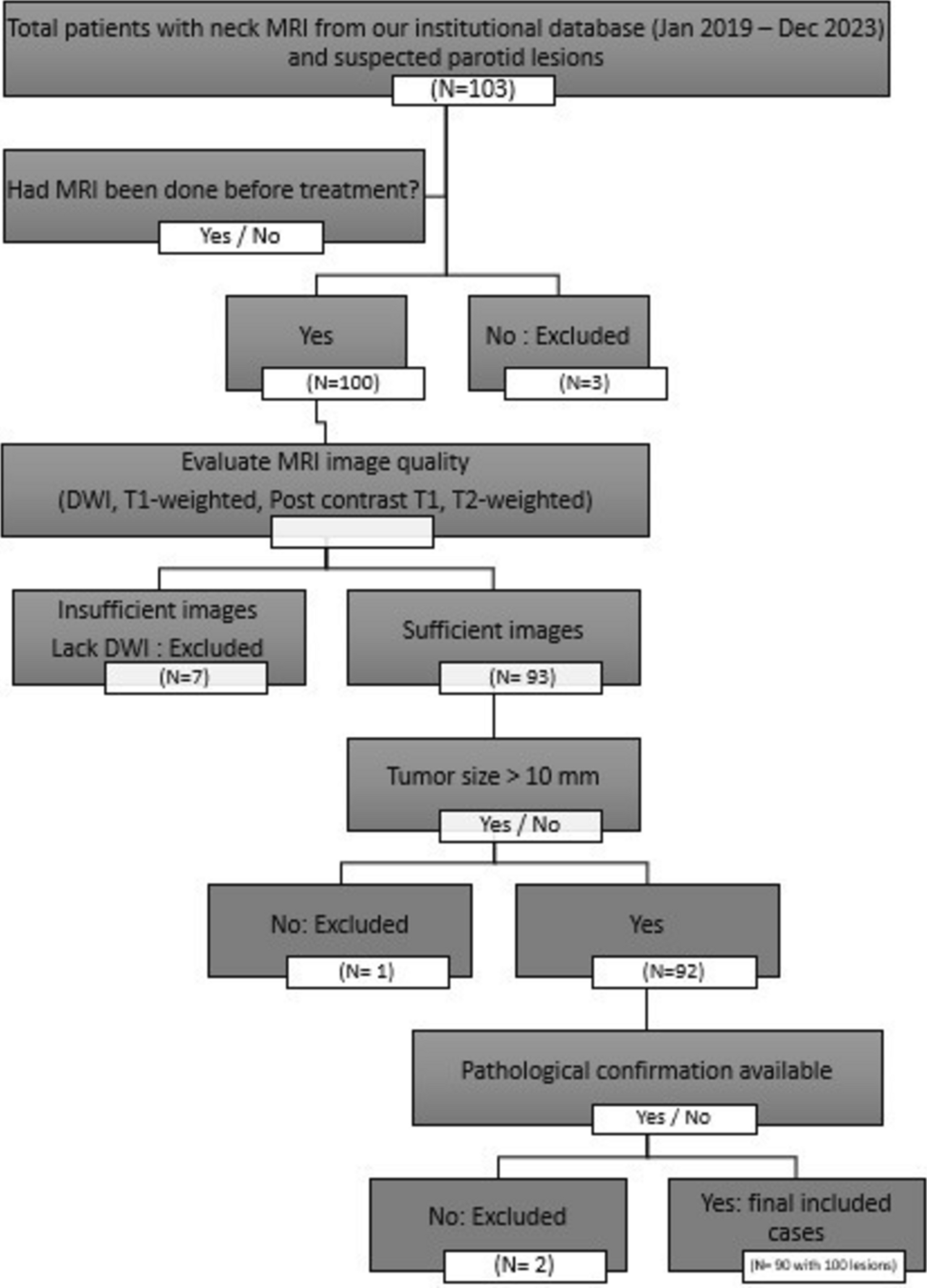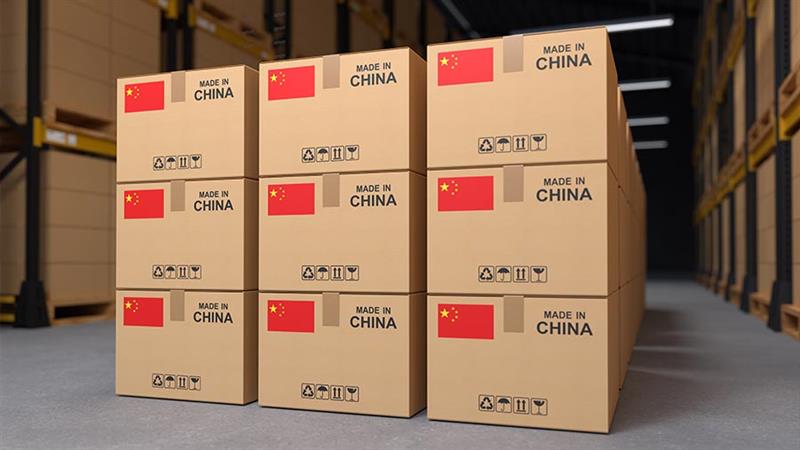Intel has confirmed it is developing a “Next ARC Family” of GPUs, utilizing its “Xe3P” graphics architecture. This news, revealed at the 2025 Tech Tour US, follows an in-depth look at Intel’s Xe3 GPU architecture, which is…
Blog
-

Safer, More Sustainable Antimicrobials To Prevent Infection Of Cow Udders
Image: (From left) Prof Mary Chan from Nanyang Technological University, Singapore, Dr Kaixi Zhang from the Singapore-MIT Alliance for Research and Technology, and Prof Paula Hammond from the Massachusetts Institute of Technology were…
Continue Reading
-

5-HTP shows early promise for cognitive support
The intervention also raised blood serotonin, the neurotransmitter 5-HTP helps produce. However, anxiety scores and Alzheimer’s-linked blood proteins did not change.
The study enrolled 30 adults with a mean age of 66 to 67. Participants were…
Continue Reading
-

The diagnostic performance of Magnetic resonance imaging-derived apparent diffusion coefficient histogram analysis in distinguishing between benign and malignant parotid gland tumors | Egyptian Journal of Radiology and Nuclear Medicine
Distinguishing between benign and malignant parotid tumors remains a clinical challenge. Moreover, the true extent of tumor infiltration is often underestimated upon clinical examination [5].
This study aimed to evaluate the diagnostic performance and inter-observer reliability of conventional MRI and ADC histogram analysis in differentiating benign from malignant parotid gland masses.
In harmony with our findings, Rajbhar et al. [6] conducted a five-year retrospective analysis of 67 surgically excised salivary gland tumors to evaluate demographic, clinical, and histopathological patterns. They reported a male-to-female ratio of 1.1:1, indicating a slight male predominance consistent with broader trends in salivary gland tumors. They also found a higher proportion of benign tumors, with 85.1% benign and only 14.9% malignant cases, and the parotid gland was the most frequently affected site, accounting for 76.1% of tumors, with benign tumors predominantly arising from this gland (80.7%), supporting its established role as the primary site of salivary neoplasms.
In concordance with our findings, Tartaglione et al. [7] retrospectively evaluated pre-surgical MRI findings in 94 patients with histologically confirmed parotid gland tumors to identify imaging characteristics predictive of malignancy and found that the majority of cases were benign 69 (73%), while 25 (27%) cases were malignant, and most tumors in their cohort were unilateral. Also, they identified multifocal lesions in three Warthin’s tumors and one pleomorphic adenoma, indicating that multifocality, while less frequent, can occur in both benign and malignant pathologies.
Parallel to our results, Xu et al. [8] conducted a retrospective MRI-based study on 73 patients with histologically confirmed parotid tumors and found that for ADC value, the intraclass correlation coefficient was 0.85 and P value < 0.001, indicating an excellent agreement between the two observers.
In harmony with our findings, Takumi et al. [9] conducted a study using diffusion tensor imaging (DTI) to assess its ability to differentiate malignant from benign parotid gland tumors. They evaluated 59 tumors using ADC and fractional anisotropy (FA) metrics at 3 T MRI and reported a mean ADC value of 0.93 ± 0.21 × 10⁻3 mm2/s for malignant tumors and 1.19 ± 0.50 × 10⁻3 mm2/s for benign tumors, with no statistically significant difference between them (P = 0.225). Although the difference did not reach significance in their sample, their numerical trend toward lower ADC in malignancy supports the directionality observed in our study. They also found an inter-observer agreement which was excellent, with ICCs of 0.98 for both ADC and FA.
In addition, Zhang et al. [10] included 67 patients with 71 salivary gland tumors who underwent MRI examination to evaluate the diagnostic performances of DWI and intravoxel incoherent motion (IVIM) for discriminating between benign and malignant tumors and found that an analysis of inter-observer agreement showed that for all DWI- and IVIM-related parameters, the mean values showed the highest ICCs (0.992 [95% CI: 0.987–0.995] for ADC mean (P < 0.001).
In our study, malignant lesions were associated with older patient age and significantly lower ADC values, including mean, minimum, and maximum ADCs, along with higher skewness, indicating asymmetric diffusion.
In partial agreement with our results, Wang et al. [11] conducted a retrospective study of 526 patients to differentiate benign from malignant parotid tumors using clinical and ultrasound features alongside radiomics and deep learning models. They reported no significant difference in gender distribution between groups (male: 53.80%, female: 46.20%; P = 0.923), consistent with our findings. Similarly, calcification showed no significant association with tumor type (P = 0.264). In contrast, they found no significant difference in margin definition (P = 0.176) or cystic component presence (P = 1.0). This discrepancy may be attributed to the higher soft tissue contrast and structural detail provided by MRI compared to ultrasound.
Supporting our results, Razek et al. [12] performed a prospective study involving 27 patients—18 with pleomorphic adenomas and 9 with salivary gland malignancies, to evaluate the role of DWI and histogram analysis of ADC maps in characterizing parotid tumors. Whole-lesion ADC histogram parameters were assessed, revealing significantly higher ADCmean (1.93 ± 0.34 vs. 1.26 ± 0.54, P = 0.007), ADCmin (0.96 ± 0.29 vs. 0.62 ± 0.16, P = 0.02), and ADCmax (2.26 ± 0.36 vs. 1.52 ± 0.56, P < 0.001) in the pleomorphic adenoma group compared to the malignant group. Contrastingly, skewness was significantly greater in pleomorphic adenoma (0.57 ± 0.56 vs. 0.37 ± 0.52, P < 0.001), while no significant difference in kurtosis was observed (P = 0.86).
Also, Chen et al. [13] conducted a retrospective study to evaluate the diagnostic performance of histogram features derived from DWI, diffusion kurtosis imaging (DKI), and IVIM for differentiating benign from malignant parotid gland tumors. They reported significantly lower ADCmean and ADCmedian values in malignant tumors compared to benign ones (982.81 vs. 1194.39 × 10⁻⁶ mm2/s and 968.38 vs. 1189.38 × 10⁻⁶ mm2/s, respectively; P = 0.02 for both). They also reported no significant differences in kurtosis between malignant and benign lesions in ADC-based analysis (P = 0.18).
In another study population, Zhu et al. [14] conducted a retrospective study aiming to differentiate benign from malignant palatal lesions using conventional MRI features and ADC histogram analysis. The study included 86 histopathologically confirmed patients (57 with malignant and 29 with benign palatal lesions). It assessed nine ADC histogram parameters derived from DWI, alongside conventional MRI features such as lesion size, capsule presence, and nerve invasion. They found that malignant lesions had significantly lower ADC50 (1.01 ± 0.16 × 10⁻3 mm2/s vs. 1.51 ± 0.33, P < 0.001), ADC10 (0.79 ± 0.15 vs. 1.22 ± 0.29, P = 0.001), and overall mean ADC (1.02 ± 0.19 vs. 1.51 ± 0.37, P < 0.001) compared to benign lesions, which mirrors our observation of consistently lower ADC values across various measures in malignant tumors. Additionally, they reported significantly larger lesion size in malignant cases (P = 0.02), as well as higher frequency of nerve invasion (P = 0.022) and absent capsule (P = 0.019).
In our study, both observers demonstrated high and consistent diagnostic performance in using ADC values to differentiate malignant parotid lesions, with excellent agreement. At the optimal cut-off value of < 1.15 × 10⁻3 mm2/s, observer 1 achieved an AUC of 0.847 and observer 2 an AUC of 0.857, with closely matched sensitivity, specificity, and accuracy values. This strong alignment indicates a high level of interobserver concordance in ADC-based malignancy assessment.
In harmony with our findings, Al-Kheshen et al. [15] investigated the role of diffusion-weighted MRI and ADC values in differentiating benign from malignant salivary gland tumors. They reported a significantly lower mean ADC in malignant lesions. They achieved high diagnostic performance using a cut-off value of < 0.85 × 10⁻3 mm2/s, with a sensitivity of 93.7%, specificity of 95.8%, and overall accuracy of 94.4%. Although their metrics were higher, the discrepancy may be attributed to differences in imaging parameters, cut-off thresholds, and population characteristics. Nonetheless, both studies confirm the strong diagnostic utility of ADC in parotid tumor characterization.
In addition, Aly Nada et al. [16] investigated the role of DWI and ADC in distinguishing between benign and malignant parotid gland lesions. They reported a statistically significant difference in ADC values, setting a cut-off at 0.93 × 10⁻3 mm2/s, which yielded a sensitivity of 72.1% and specificity of 82%, closely aligning with our diagnostic performance.
Moreover, in another population, Eida et al. [17] assessed the diagnostic value of ADC mapping in distinguishing benign from malignant salivary gland tumors in a cohort of 31 patients and found that malignant tumors exhibited significantly fewer areas with high ADC values (≥ 1.8 × 10⁻3 mm2/s). Using a threshold of high ADC occupying < 5% of the tumor area, they reported a sensitivity of 89%, specificity of 100%, and an overall accuracy of 97%. While their method involved spatial analysis of ADC distribution rather than a single cut-off value, it also underscores the utility of ADC in preoperative differentiation of salivary gland lesions, with methodological differences likely explaining the higher accuracy reported in their work.
Also in our study, ROC analysis revealed that mean ADC was the most reliable histogram parameter for differentiating malignant from benign parotid lesions., with an AUC of 0.793, 75.6% sensitivity, 67.8% specificity, and 74.3% overall accuracy. Minimum ADC showed fair diagnostic ability (AUC = 0.720) with slightly lower specificity and accuracy. Maximum ADC had the highest sensitivity (80.5%) but the lowest specificity (59.3%) and overall diagnostic performance (AUC = 0.712, accuracy = 67.2%).
In agreement with our findings, Razek et al. [12] identified mean ADC as the most accurate parameter, reporting an AUC of 0.948 with 88.9% sensitivity and 94.4% specificity at a cut-off of 1.16 × 10⁻3 mm2/s. Their minimum ADC also showed comparable diagnostic performance (AUC = 0.753, sensitivity = 88.9%, specificity = 61.1%), aligning with our results. Similarly, maximum ADC was the least discriminative in both studies, with their AUC of 0.873 slightly exceeding ours, likely due to population differences and tumor subtype stratification.
In partial agreement with our findings, Hepp et al. [2] conducted a prospective study involving 73 patients to compare the diagnostic performance of full ADC histogram distribution curves against mean ADC values for parotid tumor differentiation. They reported that the mean ADC provided higher sensitivity than histogram distribution (71.4% vs. 61.9%), aligning with our finding that mean ADC was the most sensitive individual parameter. However, they found that histogram-based analysis offered superior specificity (75.0% vs. 71.2%) and higher predictive accuracy during cross-validation (71.2% vs. 67.1%). This contrast in specificity may be attributed to their use of an advanced full-curve comparison approach.
However, Sobhy et al. [18] conducted a prospective study on 25 patients using combined conventional MRI and DWI to evaluate the diagnostic value of ADC in parotid tumor characterization. They reported markedly higher diagnostic accuracy, with a sensitivity of 92.86% and specificity of 90.91%, alongside equally high PPV and NPV values. These superior outcomes may be attributed to the smaller sample size, combined morphologic and diffusion assessment, and likely inclusion of distinct tumor subtypes, which can affect diffusion behavior and classification thresholds.
Continue Reading
-

LineageOS 23 keeps the custom ROM spirit alive with Android 16
Of all the custom ROMs still around, LineageOS remains the most popular. The hard work of the team behind the ROM lays the foundation for several other ROMs. With Android 16 available for a few months now, the LineageOS team has finally released…
Continue Reading
-

Cardiologist with 30+ years of experience shares why even ‘healthy’ supplements may not protect your heart: ‘Aspirin…’
Despite countless awareness drives and medical advancements, myths surrounding heart health refuse to fade. Many people still associate heart disease only with men or assume that an active lifestyle completely shields them from risk. In…
Continue Reading
-

ACI Asia-Pacific & Middle East-airsight Safety Webinar draws strong industry engagement
ACI Asia-Pacific & Middle East (ACI APAC & MID), in partnership with leading aviation consultancy airsight, successfully co-hosted a Safety Webinar on ICAO Obstacle Limitation Surface (OLS) Requirements.
The webinar saw strong turnout of over 100 industry stakeholders, which also included the ICAO MID Regional Officer AGA, highlighting the growing interest in the latest updates to ICAO’s OLS framework, a critical element of airport safety management.
Ms. Badriyah Noordin, Senior Manager, Safety at ACI APAC & MID, and Mr. Malte Karger, Director of Business Development at airsight and member of the ICAO Obstacle Limitation Surface Task Force (OLSTF), led the session. They provided an in-depth look into the upcoming changes to Annex 14, Volume I, including new Aeroplane Design Groups (ADG) and the comprehensive revision of obstacle-free and evaluation surfaces (OFS/OES).
The session offered practical insights into the implications for regulators and airport operators, emphasising the importance of aeronautical studies in maintaining compliance with international safety standards.
Our ongoing efforts in the area of safety, reaffirms our commitment to promoting strong safety culture in the region.
Background of ICAO Obstacle Limitation Surface Task Force (OLSTF)
Since 2015, the ICAO Obstacle Limitation Surface Task Force (OLSTF) has been reviewing the obstacle limitation requirements around aerodromes. This review resulted in two major upcoming changes in chapter 4 of ICAO Annex 14 Vol. 1 and related ICAO documents; the introduction of new Aeroplane Design Groups (ADG) as well as completely revised obstacle limitation surfaces and requirements.
On 4 August 2025, these new requirements have become effective, with an applicability date of 21 November 2030. This represents a major change for regulators, aerodromes, and other stakeholders. Therefore, ACI Asia-Pacific & Middle East, supported by airsight, wants to explain its members and all interested stakeholders about the changes.Continue Reading
-

China’s New Procurement Policy Favors “Made in China”: An Explainer
- China’s new government procurement policy introduces a 20 percent price evaluation advantage for qualifying domestic products and sets clearer standards for what counts as “Made in China.”
- This poses real challenges for foreign businesses – especially those with offshore production – but also creates a more transparent and fairer competitive environment.
- To stay competitive, companies should proactively localize production, strengthen compliance systems, and align with evolving standards to seize new opportunities in China’s vast public procurement market.
On September 30, 2025, China’s State Council issued the official version of the Notice on Implementing Domestic Product Standards and Related Policies in Government Procurement (Guobanfa [2025] No. 34, hereinafter, the Notice), confirming a major shift in how domestic products are evaluated in public tenders.
Find Business Support
Effective January 1, 2026, the policy is largely unchanged from the draft circulated in December. Among others, products manufactured or substantially transformed in China will enjoy a 20 percent evaluated-price advantage in competitive government procurement. In practice, this means a “made in China” product could be up to 25 percent more expensive than a foreign alternative and still win the bid based on the evaluated price.
This policy aims to refine China’s government procurement system by promoting a more unified, open, fair, and orderly market. By clearly defining what constitutes a “domestic product,” the regulation aims to guide and standardize support for local goods – without veering into excessive protectionism or discrimination.
For foreign-invested enterprises (FIEs) already operating in China or considering entry into the government procurement space, this development is highly consequential. It could affect FIEs’ eligibility for certain public projects, reshape supply chain configurations, and influence product localization and market entry decisions.
This article breaks down the key provisions of the new policy from a foreign business perspective, answers the most pressing questions, and offers practical strategies to help you navigate the evolving procurement landscape – seizing opportunities while managing risks.
Explore vital economic, geographic, and regulatory insights for business investors, managers, or expats to navigate China’s business landscape. Our Online Business Guides offer explainer articles, news, useful tools, and videos from on-the-ground advisors who contribute to the Doing Business in China knowledge.
Start exploringKey provisions of China’s new government procurement policy
Defining “domestic products”
A central feature of the newly issued policy is the clear definition of what qualifies as a “domestic product” eligible for preferential treatment in government procurement. According to the Notice, a product must meet three cumulative criteria to be recognized as domestic:
Criterion 1: Substantial transformation within China
To qualify, a product must be produced within China’s customs territory and undergo a process that results in a change in attributes – meaning the raw materials or components are transformed into a new product with a distinct name, characteristics, or use.
The regulation explicitly excludes certain activities from being considered “production,” such as:
- Protective operations during transportation or storage;
- Packaging, display, and other sales-related actions;
- Branding or labeling;
- Simple painting, polishing, or repackaging; and
- Other activities that clearly do not constitute manufacturing.
Get smart: Mere assembly, packaging, or branding in China does not suffice. A genuine manufacturing process must occur to meet the standard.
Criterion 2: Local component cost ratio
The cost of components produced within China must account for a specified proportion of the product’s total cost. This ratio will be determined by the Ministry of Finance (MOF) in collaboration with relevant industry authorities.
Note: Although the exact thresholds have not yet been released, products that meet the first criterion (substantial transformation) will be temporarily treated as domestic until the cost ratio standards are formally introduced.
Criterion 3: Requirements for key components and processes
For certain categories of products – particularly those involving advanced technologies or national security concerns – additional requirements apply. These include the need for key components and critical manufacturing processes to be completed within China.
Get smart: High-tech and sensitive products will face stricter localization requirements, ensuring that core technologies and production steps are not outsourced.
Transition period
The MOF, together with industry regulators, will develop product-specific standards – regarding criteria 2 and 3 – over the next five years, with a transition period of 3 to 5 years to allow for gradual compliance.
Cost accounting rules for domestic components
The cost of components produced within China must be calculated in accordance with the Basic Rules for Cost Accounting of Components Produced in China. This standardized approach ensures consistency in determining whether a product meets the domestic content threshold.
Component hierarchy
- Primary components refer to the parts that directly make up the final product.
- Secondary components are those that directly constitute the primary components.
- If a primary component cannot be further broken down, it is treated as a secondary component for accounting purposes.
Inclusion criteria
- The entire cost of a secondary component is counted toward the domestic component cost only if it is produced within China.
- If a secondary component is not produced in China, its cost is excluded from the domestic component calculation.
Cost basis
The total product cost and the cost of individual components should be calculated based on reliable accounting data, including:
- Internal cost accounting records;
- Procurement contracts; and
- Purchase and inventory records.
Further clarifications
Any additional issues or ambiguities related to cost accounting will be addressed through supplementary regulations issued by the MOF in coordination with relevant authorities.
Get smart: This rule ensures a transparent and consistent method for assessing domestic content, focusing not just on where final assembly occurs, but on the origin of underlying components. It also provides flexibility for future refinement as industry practices evolve.
Scope of application
The domestic product standards outlined in the new policy apply specifically to goods-related government procurement projects. This includes:
- Direct procurement of goods; and
- Goods components embedded within service contracts.
The applicable scope is aligned with the “Goods” category in the Government Procurement Item Classification Catalogue, but with explicit exclusions. The following items are not covered by the domestic product standards:
- Buildings and structures;
- Cultural relics;
- Books and archives;
- Animals and plants;
- Agricultural products;
- Mineral resources;
- Energy sources (for example: electricity, natural gas);
- Food ingredients; and
- Intangible assets.
Get smart: The policy primarily targets tangible, manufactured products with identifiable supply chains and component structures. It does not apply to services themselves or to items that are immovable, naturally occurring, or not subject to industrial production.
Support measures for “domestic products”
Find Business Support
To enhance the competitiveness of domestic products in public tenders, the Notice introduces a price evaluation advantage mechanism. This policy applies when domestic and non-domestic products compete in the same procurement process, offering a structured incentive for suppliers to prioritize locally produced goods.
Single-product procurement
In cases where a tender involves the procurement of a single product, suppliers offering a qualifying domestic product will benefit from a 20 percent price deduction during bid evaluation. This means the product’s quoted price will be reduced by 20 percent for evaluation purposes, effectively improving its competitiveness without altering the actual contract price.
Mixed-product procurement
For procurement packages containing multiple products, a supplier may receive the same 20 percent price deduction across all quoted items – provided that domestic products account for at least 80 percent of the total product cost offered by that supplier. This encourages suppliers to maximize the use of domestic products across their bids.
Get smart: The policy incentivizes suppliers to incorporate more domestic products into their offerings. If the share of qualifying domestic products is sufficiently high, the entire bid benefits from the price advantage, making it more likely to succeed in competitive evaluations.
Documentation and declaration
Procurement entities and agencies must clearly specify in tender documents that suppliers are required to submit either:
- A Declaration Letter on Compliance with Domestic Product Standards (template provided in Annex 2 of the Notice); or
- Other supporting documents as prescribed by the Ministry of Finance and relevant authorities.
Once a supplier submits a valid declaration or approved documentation, the product is to be treated as a domestic product. Procurement entities must not request additional proof beyond what is specified. Suppliers found to have submitted false declarations or forged documents to secure contracts will be held accountable under the Government Procurement Law and other applicable regulations.
Additionally, procurement entities must publicly disclose the declaration letters or supporting documents submitted by successful bidders alongside the award results.
Verification and dispute resolution
To ensure fair and consistent enforcement of the domestic product standards, the Notice outlines a structured approach for handling disputes that may arise during government procurement – particularly in relation to whether a product qualifies as domestic, meets localization thresholds, or satisfies key component and process requirements.
Determining whether a product is produced in China
- For assembled or processed products, verification relies on documentation such as domestic procurement contracts, production records, or other evidence confirming that manufacturing occurred within China.
- For raw material-based products (for example: steel, ceramics), the manufacturer’s address on the packaging serves as a key indicator of domestic production.
Verifying the domestic component cost ratio
- Suppliers must provide supporting materials – such as accounting data, procurement contracts, and inventory records – to demonstrate compliance with the required domestic component cost ratio. The MOF will assess these materials based on the established cost accounting rules.
Confirming localization of key components and processes
- For key components, the same verification method applies: suppliers must show that these parts were produced within China.
- For critical manufacturing processes, suppliers must submit records proving that the processes were completed domestically.
If a supplier fails to provide sufficient evidence, the product will not be eligible for domestic product support policies. This may affect the outcome of the procurement process and could lead to legal consequences under the Government Procurement Law if false documentation is involved.
International commitments
Where international treaties or agreements to which China is a party contain provisions that differ from the domestic product policy, those treaty obligations shall prevail. This ensures alignment with China’s global trade commitments and avoids conflicts in cross-border procurement practices.
Questions global trading partners are asking
1. Does my product qualify as a “domestic product”?
A: If your product undergoes substantial manufacturing or processing within China – not just simple assembly or branding – it may qualify. However, future compliance will also depend on meeting domestic component cost ratio thresholds, which are yet to be announced. In certain sectors (for example, high-end equipment, IT), key components and processes may also need to be localized.
Recommendations:
- Assess the depth of your production activities in China.
- Monitor upcoming standards from the MOF and industry regulators.
- Prepare to adjust supply chains to meet localization benchmarks.
2. Will foreign enterprises be excluded from China’s procurement market?
A: No. The policy explicitly guarantees equal treatment for all business entities, including foreign-invested firms. If your product meets the domestic product criteria, you are entitled to the same 20 percent price evaluation advantage as local suppliers. Discrimination based on brand origin, registration location, or ownership structure is prohibited.
Recommendations:
- Avoid misinterpreting the policy as “buy local only.”
- Focus on understanding and meeting the domestic product standards.
- Engage with procurement authorities to clarify eligibility.
3. What preparations are needed to qualify under the new standards?
A: To benefit from the policy, your product must:
- Be substantially produced or processed in China;
- Include a high proportion of China-made components; and
- For certain industries, localize key technologies and processes.
Recommendations:
- Explore relocating or expanding production stages to China.
- Collaborate with suppliers to increase domestic content.
- Maintain detailed records of production and procurement for compliance verification.
4. Is this policy a sign of rising protectionism? Is China still open to foreign business?
Find Business Support
A: While the policy does prioritize domestic manufacturing, it’s not a blanket move toward protectionism. Instead, it reflects China’s broader strategy to upgrade industries, foster innovation, and retain foreign investment, while still maintaining a commitment to fair and open competition.
In fact, FIEs can benefit from clearer pathways to qualify as domestic producers. It will reduce uncertainties that previously hindered foreign participation in China’s procurement market. By explicitly banning discrimination based on company origin or registration, in contrast to protectionism, the policy is expected to curb local favoritism and promote a more level playing field.
Recommendations:
- View the policy as part of China’s broader industrial strategy.
- Stay engaged in policy consultations and express constructive feedback.
- Maintain long-term confidence in China’s evolving procurement landscape.
5. If my product doesn’t meet the standards, do I still have a chance?
A: Yes. Products that don’t qualify as domestic can still participate in procurement, but won’t receive the 20 percent price advantage. If your offering excels in technology, pricing, or service, it may still win bids. Not all projects require domestic products.
Recommendations:
- Continue bidding where appropriate, leveraging your strengths.
- Track policy developments and gradually adapt your supply chain.
- Focus on sectors or projects with more flexible sourcing requirements.
How should businesses prepare for the new procurement policy?
With China’s new government procurement policy set to take effect on January 1, 2026, businesses, especially FIEs, should begin preparing strategically to ensure compliance and competitiveness.
Currently, two of the three criteria – (2) the proportion of domestic component costs and (3) requirements for key components and critical manufacturing processes – are expected to be refined over the next three to five years. In the interim, products that are manufactured within China will generally be classified as domestically produced for procurement purposes.
However, businesses that rely heavily on imported components or offshore manufacturing should begin gradually enhancing local production in response to the evolving policy. This includes increasing the share of domestically sourced components and relocating key manufacturing processes to China in a structured and strategic manner.
A thorough supply chain review is essential. Companies should evaluate whether raw materials, intermediate goods, and finished products are sourced and manufactured within China, in line with the clarified requirements of the “domestic product” classification under the Notice.
In addition, businesses should begin building robust documentation and compliance systems to support their participation in government procurement. With detailed rules for verifying domestic content and the potential for dynamic adjustments to ratio thresholds, maintaining transparent and well-organized records will help mitigate disqualification risks and improve procurement efficiency.
Key takeaway
China’s new government procurement policy undeniably introduces new barriers for foreign enterprises, particularly those whose products are not manufactured locally. The emphasis on domestic production, component sourcing, and localized processes means that companies relying heavily on overseas supply chains may face reduced competitiveness in public tenders.
However, the policy also brings greater clarity and transparency. By explicitly banning discrimination based on company origin, registration location, or ownership structure, the Notice creates a more level playing field for foreign-invested enterprises. This shift could unlock new growth opportunities for businesses willing to adapt.
Importantly, the policy is designed to support domestic industry and discourage manufacturing reshoring, not to deter foreign investment. It is expected that the government will have strong incentives to maintain fair competition, especially as it seeks to attract high-quality foreign participation in strategic sectors.
For foreign businesses, the path forward lies in proactively localizing production, strengthening compliance systems, and aligning with evolving standards. Those that do so will not only remain competitive but also deepen their integration into China’s vast and increasingly regulated procurement market.
Dezan Shira & Associates is here to help your business navigate China’s evolving government procurement landscape.
What we offer:
- Strategic advisory on domestic product qualification and compliance
- Pre-establishment and localization planning for procurement eligibility
- Supply chain review and cost structure analysis aligned with policy standards
- Step-by-step support for documentation, declarations, and regulatory filings
- Tailored consultation for foreign-invested enterprises entering public tenders
For personalized advice on how your business can adapt and compete under the new rules, contact our experts at China@dezshira.com.
About Us
China Briefing is one of five regional Asia Briefing publications. It is supported by Dezan Shira & Associates, a pan-Asia, multi-disciplinary professional services firm that assists foreign investors throughout Asia, including through offices in Beijing, Tianjin, Dalian, Qingdao, Shanghai, Hangzhou, Ningbo, Suzhou, Guangzhou, Haikou, Zhongshan, Shenzhen, and Hong Kong in China. Dezan Shira & Associates also maintains offices or has alliance partners assisting foreign investors in Vietnam, Indonesia, Singapore, India, Malaysia, Mongolia, Dubai (UAE), Japan, South Korea, Nepal, The Philippines, Sri Lanka, Thailand, Italy, Germany, Bangladesh, Australia, United States, and United Kingdom and Ireland.
For a complimentary subscription to China Briefing’s content products, please click here. For support with establishing a business in China or for assistance in analyzing and entering markets, please contact the firm at china@dezshira.com or visit our website at www.dezshira.com.
Continue Reading
-

India set for blockbuster IPO month with $5bn in listings
Unlock the Editor’s Digest for free
Roula Khalaf, Editor of the FT, selects her favourite stories in this weekly newsletter.
India is set for a blockbuster month of initial public offerings after a slow start to the year, as companies take advantage of a stock market rebound from the initial turbulence of US President Donald Trump’s tariff threats.
Two of the year’s biggest IPOs are hitting markets this week, with the $1.7bn listing of Tata Capital on Monday and the $1.3bn debut of LG Electronics’ India business on Tuesday. In total, analysts forecast about $5bn of IPOs this month, with another $5bn before the year-end.
The “India IPO pipeline is the most active it has been”, said Harish Raman, co-head of Asia equity capital markets at Citigroup.
Equities have recovered from an unexpectedly slow start to the year after Trump’s “liberation day” tariffs in April and a brief military conflict with Pakistan in May raised concerns about the country’s economic growth.
Although 50 per cent tariffs on India remain in place — among the highest in the world — the market has largely shrugged off the threat, with the Nifty 50 stock index up 14 per cent from an April low.
IPOs are on track to overtake last year’s record of $21bn. Much of the activity has been concentrated in October as steady earnings and recent government vows to overhaul the goods and services tax have “boosted overall confidence in the primary market”, said Pranav Haridasan, chief executive of Axis Securities.
Other expected listings include the $1bn-plus debut of ICICI Prudential Asset Management and that of Pine Labs, a digital payments company backed by PayPal and Temasek that hopes to raise nearly $700mn.
WeWork India, which the US parent sold to Indian property group Embassy last year, raised more than $350mn this month.
George Chan, EY’s global head of IPOs, said the rebound of activity in the second half was supported by strong valuation multiples and domestic investor demand.
“The rise in average deal size reflects growing investor optimism in sectors such as fintech, manufacturing and renewables,” he said in a report last week.
India Business Briefing
The Indian professional’s must-read on business and policy in the world’s fastest-growing big economy. Sign up for the newsletter here
Domestic investors have put a net $63.2bn into the market this year, more than covering $25.3bn in net outflows of foreign holdings, according to data from Groww, one of India’s largest online trading platforms.
Mutual funds have become a popular vehicle for retail investors, with households ploughing about $3bn a month into funds through systematic investment plans, according to Yatin Singh, chief executive of investment banking at Emkay Global Financial Services.
The steady inflows in turn are “providing strong support to fundraising activity”, said Kailash Soni, head of India equity capital markets at Goldman Sachs.
But the domestic funds’ dominance has also shut out foreign investors from the IPO rush.
“Because the participation of domestic mutual funds is so heavy the allocations become very limited,” said Rita Tahilramani, investment director of Asian equities at Aberdeen, adding that allotments were “so minuscule that even if I make good money on that front it’s meaningless”.
She also raised concerns about “very expensive” valuations that mean “there’s nothing left on the table for an investor in the IPO”.
Nonetheless, domestic funds are expected to continue supporting the market, especially since the government restricts individual foreign investment by Indians to $250,000 a year.
“Indian investors don’t have the option of shopping around Asia for the best bargain,” said Singh, “so structurally, whatever monies come in need to get redeployed within India.”
Continue Reading
-

Wallabies End of Year Tour squad confirmed
Wallabies coaches have confirmed a 34-player squad for the upcoming End of Year Tour, with uncapped Queensland pair Aidan Ross and Kalani Thomas selected as potential debutants.
Loosehead prop Ross, linked up with the squad in July, while…
Continue Reading

